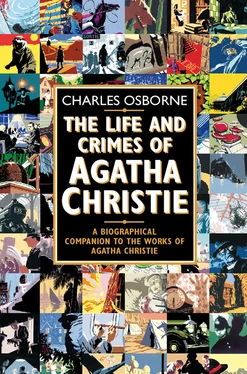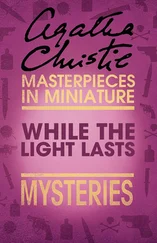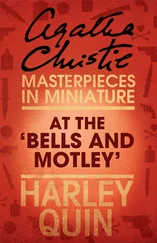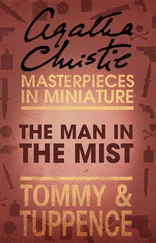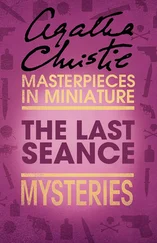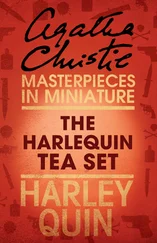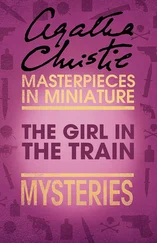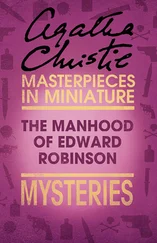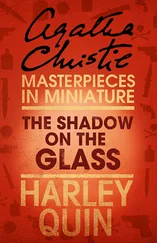Devoted Christieans, who delight in assembling the ‘facts’ about Poirot in the same manner that Conan Doyle’s more fanatical admirers tend to research the great Sherlock Holmes, have somehow convinced themselves that Poirot retired from the Belgian Police Force in 1904, and that this fact is revealed in The Mysterious Affair at Styles. It is not. We are told that Poirot ‘had been in his time one of the most celebrated members of the Belgian Police.’ When, late in the story, Inspector James Japp of Scotland Yard puts in an appearance (he is the Christiean equivalent of Sherlock Holmes’s sparring partner, Inspector Lestrade), he greets Poirot and then, turning to a colleague says: ‘You’ve heard me speak of Mr Poirot? It was in 1904 he and I worked together – the Abercrombie forgery case – you remember, he was run down in Brussels. Ah, those were great days, moosier. Then do you remember “Baron” Altara? There was a pretty rogue for you! He eluded the clutches of half the police in Europe. But we nailed him in Antwerp – thanks to Mr Poirot here.’
Poirot, then, was active in his post in 1904, and the ‘Baron’ Altera affair may well have occurred after 1904. It is possible that Poirot’s retirement did not take place until 1914, in which case he could have been as young as sixty-seven at the time of the Styles murder in 1916. (In Murder on the Links, published three years after Styles, we learn that Poirot was still active in Ostend in 1909.) Agatha Christie later declared that, if she had realized how long she was going to be saddled with Poirot, she would have made him a much younger man on his first appearance. It is fortunate that fictional chronology can be flexible, for otherwise Poirot would have been at least one hundred and twenty years of age when he came to solve his final case in 1974, after having featured in thirty-three novels and fifty-two short stories. That he was still in his sixties, and not older, when Mrs Christie first introduces us to him in The Mysterious Affair at Styles is suggested by a remark of Hastings, when he fails to understand Poirot’s train of thought: ‘The idea crossed my mind, not for the first time, that poor old Poirot was growing old.’ If Poirot had appeared to be in his seventies, the idea that he might be growing old would probably not have crossed even Hastings’ mind.
One of Agatha Christie’s great achievements as a crime writer was to make murder cosy enough to be palatable to refined middleclass tastes. She abhorred violence, 4 Конец ознакомительного фрагмента. Текст предоставлен ООО «ЛитРес». Прочитайте эту книгу целиком, купив полную легальную версию на ЛитРес. Безопасно оплатить книгу можно банковской картой Visa, MasterCard, Maestro, со счета мобильного телефона, с платежного терминала, в салоне МТС или Связной, через PayPal, WebMoney, Яндекс.Деньги, QIWI Кошелек, бонусными картами или другим удобным Вам способом.
and those who see in it the only reality will seek that kind of reality in vain in the Christiean oeuvre. Her appeal is incredibly wide – ça va sans dire, as Poirot might say – and it is an appeal not to the blood lust but to a civilized delight in the puzzle shared by her readers of all social and intellectual classes. One can discuss Agatha Christie novels with cleaning ladies and classical scholars, with dustmen and dons.
This cosiness is, of course, in itself unreal. The Mysterious Affair at Styles has the inhuman remoteness of the puzzle, but it also, curiously, has something of the texture of a social document as well, especially now, more than half a century after it was written, when its social world has all but disappeared. To Agatha Christie, it would seem to have been already disappearing in 1916. The atmosphere in Styles Court and in the nearby village of Styles St Mary is of a country at war. The war may be only a lightly sketched background, but it is there. The servants necessary to staff a large country house are there, too, but only just. Of Dorcus, the faithful old family retainer, Hastings says, ‘I thought what a fine specimen she was of the old-fashioned servant that is so fast dying out.’
The values implicitly subscribed to, and the opinions expressed by many of her characters, can reasonably be assumed to be shared by the young author of Styles. Evidence in a good many of the early Christie novels seems to point to an unthinking, casual anti-semitism of the kind then prevalent in the English upperclasses. In Styles, Dr Bauerstein, a Polish Jew, is suspected of spying. ‘A very clever man – a Jew of course,’ says Poirot, at which Hastings exclaims, ‘The blackguard!’ Not too worrying, though there is a suggestion that the doctor’s Jewish cleverness is as reprehensible as his espionage activities. In any case, the balance is redressed somewhat with this exchange between a jealous husband and his wife who is infatuated with Bauerstein:
‘I’ve had enough of the fellow hanging about. He’s a Polish Jew, anyway.’
‘A tinge of Jewish blood is not a bad thing. It leavens the’ – she looked at him – ‘stolid stupidity of the ordinary Englishman.’
The tactics, though not the actual method of murder, used by the killer of Mrs Inglethorp were adopted successfully by a real-life murderer about ten years after the publication of Agatha Christie’s first novel. It is quite possible that he derived his inspiration from a reading of the book. Other odd facts to be noted about The Mysterious Affair at Styles are that the author emphasizes the puzzle-solving aspect of the reading experience by including two plans, one of the first floor of Styles Court and one of Mrs Inglethorp’s bedroom, and a number of illustrations of clues, letters, fragments of handwriting and cryptic messages; that Hastings gives evidence of his propensity for redheads, which will continue to be displayed in later stories, by unsuccessfully proposing marriage to one; and that Agatha Christie signals to the reader in the final paragraph of the novel that she is prepared to produce one or more sequels to Styles. ‘Console yourself, my friend,’ Poirot says to Hastings who has failed to capture his redhead. ‘We may hunt together again, who knows? And then –’
Though her gift for tight and ingenious plotting and her flair for creating believable characters mainly through convincing dialogue were to develop greatly in the next ten or fifteen years, with The Mysterious Affair at Styles Mrs Christie made an extraordinarily successful début as a crime writer. Her novel is a distinct improvement on the average level of the genre as it was then practised, and looking back on it more than half a century later you can see that, in fact, it ushered in a new era for the detective story, an era which Agatha Christie would come to dominate with her engaging and fiendishly ingenious puzzles, an era which lasted for more than three decades and which is referred to now as the Golden Age of crime fiction.
Between 1989 and 1997, nine of Agatha Christie’s novels and thirty-four short stories, all featuring Hercule Poirot as the investigator, were adapted for television with David Suchet as Poirot. The Mysterious Affair at Styles was first transmitted on London Weekend TV on 16 September 1990.
The Secret Adversary TOMMY & TUPPENCE (1922)
With Archibald and Agatha Christie living in a flat in London, and Agatha’s mother still attempting to keep up Ashfield, the Torquay house, on an inadequate income to which Agatha could not afford to contribute, the question of selling Ashfield was raised by Archie. When Agatha received the suggestion with horror, Archie then proposed that she should try to raise funds towards the upkeep of Ashfield by writing another murder mystery. After all, although she had earned only £25 from The Mysterious Affair at Styles, it had been well received and had sold a respectable number of copies. The Bodley Head had presumably not lost money on it, and would no doubt be willing a pay a little more for a second novel.
Читать дальше
